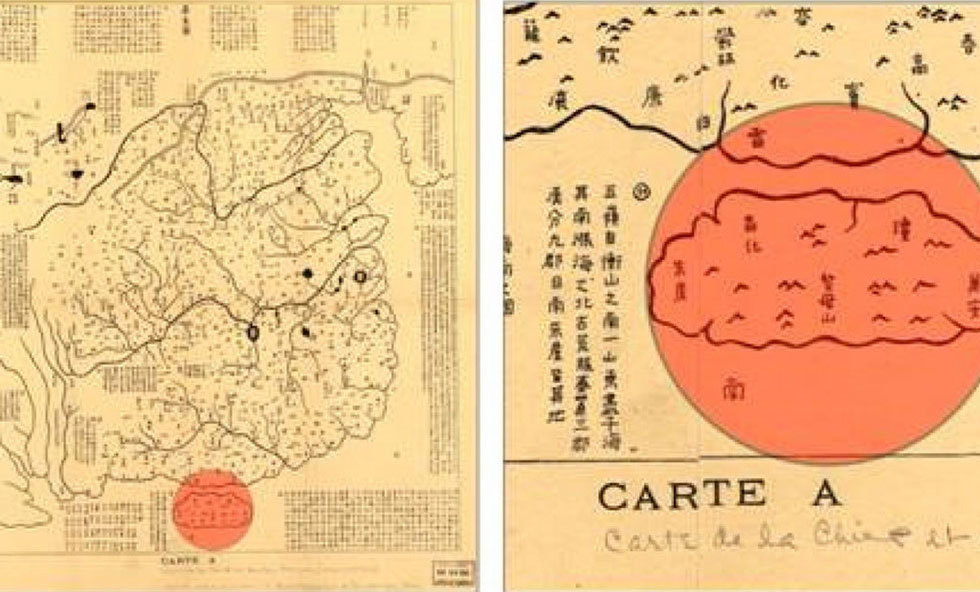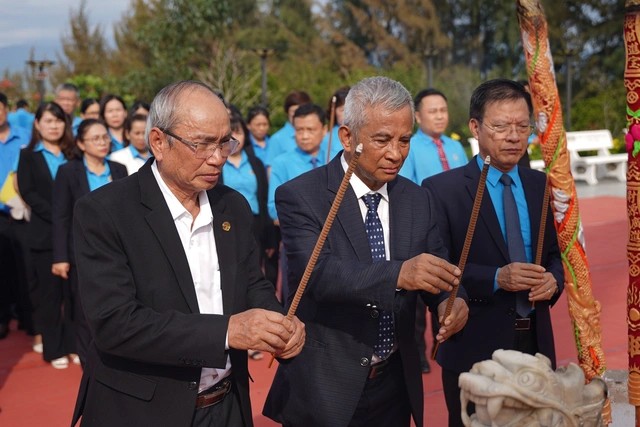Vietnam rejects China’s statement on sovereignty over Truong Sa
 |
Vietnamese Foreign Ministry spokesperson Le Thi Thu Hang. Photo: VNA
Vietnamese Foreign Ministry spokesperson Le Thi Thu Hang made the statement in response to reporters’ question on November 13.
“In this regard, Vietnam has repeatedly stated that it has sufficient historical and legal evidence to prove its sovereignty over Hoang Sa (Paracel) and Truong Sa archipelagoes in line with international law. Historical reality has proven this,” she said.
The spokesperson reiterated Vietnam’s consistent stance that all international disputes, including those relating to sovereignty over Hoang Sa and Truong Sa, must be settled by peaceful measures in accordance with international law and the United Nations Charter.
Vietnam wishes that China will join efforts in developing the bilateral relationship and maintaining peace, security and stability in the region, Hang said.
The southernmost territory of China is Hai Nan Island
According to VietNamNet, some content in the book "Chu quyen quoc gia Viet Nam tai hai quan dao Hoang Sa va Truong Sa” (Vietnamese sovereignty over the Paracel and Spratly Islands) by Assoc. Prof. Dr. Truong Minh Duc, pointed out that many ancient Chinese bibliographies, recorded by the Chinese themselves, directly or indirectly, recognize Vietnam’s sovereignty over the two archipelagos of Hoang Sa and Truong Sa.
In the age of Three Kingdoms (220-265), Wan Zhen wrote the book "Nam Chau di vat chi" (A book about strange things in Nanzhou) described the rock and sand islands on the East Sea. The book recorded the "strange" things he found in foreign countries, not strange things in China.
In the 785-805 period of the Tang Dynasty, there was a book by Gia Dam (Gaobie Daba) about the things he saw on the sea route from Guangzhou to Malabar and it did not mention the Paracel and Spratly Islands.
Also in Tang Dynasty, the book "Duong thu nghe van chi" mentioned the book "Giao Chau di vat chi" by Yang Fu which recorded strange things and strange places in Giao Chau (Vietnam). The book wrote that That Chau Duong (Hoang Sa Islands) was the place of many magnetic stones, and it was impossible for foreign boats with iron bolts to pass through.
This once again affirms that Hoang Sa Islands belonged to Giao Chau in the past, or Vietnam in modern times.
 |
The map originated from 1136 shows the southernmost territory of China is Hai Nan Island.
Another book in the Song dynasty said the border of Chinese territory with other countries was in Tonkin Gulf, while Hoang Sa and Truong Sa are hundreds of miles away from the Tonkin Gulf to the south.
Thus, ancient Chinese bibliographies in the Song dynasty all show that the Paracel and Spratly Islands did not belong to China but to another country, which China called Giao Chau (Jiaozhou) or Giao Chi (Jiaozhi)
In "Dư địa đồ đời Nguyên" (Maps of the Yuan Dynasty) by Chudou, which was resized in a map book entitled "Quang du do" by La Hongtian released in 1561, Hainan Island was once again defined as the southernmost Chinese territory.
In the Ming Dynasty, in Mao Yuan Yi's "Vu Bi Chi" book, the East Sea was called Jiaozhi sea. Other maps drawn by a Chinese navigator of this time, named Tè lín hé who traveled through the East Sea to explore the Indian Ocean did not mention Hoang Sa and Truong Sa.
In the Qing Dynasty, in the book "Hải ngoại ký sự" (Overseas records) released in 1696, a monk of the Kangxi dynasty who came to Thuan Hoa land of Vietnam's Lord Nguyen in 1695 mentioned the location of Hoang Sa, writing that Hoang Sa was a 7-day trip from Dai Viet, about 700 miles away.
A page of the book narrated the trip to Dang Trong (Dang Trong was a de facto independent kingdom ruled by the Nguyen lords), acknowledging the sovereignty of the two archipelagos of Hoang Sa and Truong Sa of Dai Viet.
This is a recognition of Dai Viet's sovereignty in the control and exploitation of the East Sea, where the Hoang Sa and Truong Sa Islands are located, because the book is written by Chinese about what they saw overseas, not in China./.
VNF/VNA
Recommended
 Seas and islands
Seas and islands
Vietnam Endorses Common Voice on Ocean Jurisdiction
 Seas and islands
Seas and islands
Dialogue as Key to Settling Disputes and Advancing Law of the Sea
 Seas and islands
Seas and islands
RoK Navy Ship Pays Friendly Visit to Da Nang City
 Seas and islands
Seas and islands
Naval Region 5 Promotes Reading Culture, Fosters Patriotism
 Seas and islands
Seas and islands
Coast Guard Region 2 Command Hosts Philippine Coast Counterpart
 Seas and islands
Seas and islands
Vietnam - Thailand Navy: Coordination to Well Address Problems at Sea
 Seas and islands
Seas and islands
Honoring the Fallen: Incense Offering for the 37th Anniversary of Gac Ma
 Seas and islands
Seas and islands
